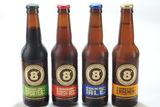Don't rely on your gut when finding value for customers
Stock photo
The old adage suggests that if you build a better mousetrap, the world will beat a path to your door. It may even be true. But unless you know exactly what it is about your mousetrap that makes it better, for whom, and why, you'll never know how many more you could have sold, and for how much more. It's about knowing your value to clients. Rather than gut instinct, the way to establish that is through a series of clearly-identified steps that enable you understand precisely what problems your product or service solves for them.
"It's about establishing the priority of values your customers have," says Helen Blake, chief executive of Futurecurve and an author of best-selling business books. "This is not just rational value such as a need to reduce costs, or increase efficiency, but emotional value too, such as precisely why your customer loves a product, has trust in your brand or faith in your personnel."
It's a process that is already paying dividends for Joe Aherne, ceo of the Leading Edge Group. His business specialises in continuous improvement consultancy. Set up two decades ago and headquartered in Cork, it has offices in Canada and Australia. Despite its exports success - Canada accounts for 55pc of revenues - Aherne is keen to leverage that further.
Last year he participated in Enterprise Ireland's International Selling Programme, a series of eight two-day modules, delivered over seven months, and accompanied by practical, company-specific assignments. This helped him establish a clear customer value proposition for The Leading Edge Group. This was essential because, again working with Enterprise Ireland, he had recently identified an opportunity to develop a software product to complement the business's consultancy work.
"Every large company has a continuous improvement function," he says. "Our new product, Citric Cube, allows them track, research and report their improvements to a central repository." Throughout the product development phase he worked with clients to establish a customer value proposition. "We got regular feedback to the extent that some of our clients became almost extensions of our business which was fantastic because it's not just about selling, it's about building rapport," he says.
"We didn't take a 'build it and they will come' approach to the product. And having a clear customer-value proposition gives us the confidence, focus and direction we need to sell it. It provides clarity of messaging to the entire team, improves the effectiveness of our marketing and lets us hit the ground running." It has provided a valuable new string to the company's bow too. "Very many small businesses fall into the trap of just doing what they do," said Aherne. "We've always been a provider of services. Now we're a technology company too."
The key to establishing your value proposition is to interview your customers, says author Helen Blake. "Don't rely on a questionnaire, to get under the skin of what matters to them you need to sit down and talk." If possible, use a third party. "It doesn't have to cost, a good non executive director is perfect, as long as they are senior and seasoned." Next, really listen. "If they say they love your business's flexibility, find out what exactly they are referring to and ask why that matters to them." Then, do your homework. "Undertake classic contextual background research to understand the drivers in their market."
It all adds up to the kind of in-depth knowledge that enables you to add value. "If the buyer is the expert, the seller becomes the commodity," says Blake. "But if the seller is the expert, then everything changes. The closer you are to providing the solution your customers needs, the greater the margin you can earn for your business."
Claire Minogue is Programme Manager with Enterprise Ireland. To find out more about EI's International Selling Programme see www.enterprise-ireland.com/internationalselling Helen Blake's new book Selling Your Value Proposition, is published by Kogan Page.
Join the Irish Independent WhatsApp channel
Stay up to date with all the latest news















